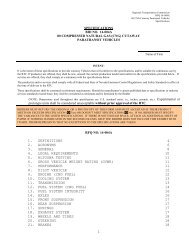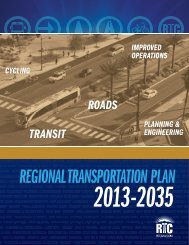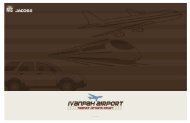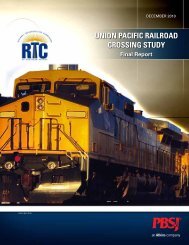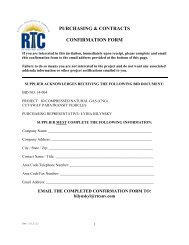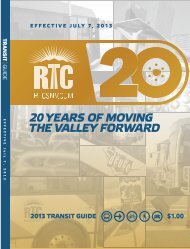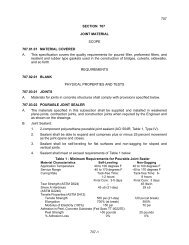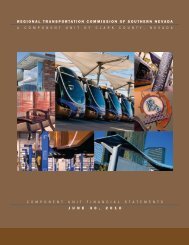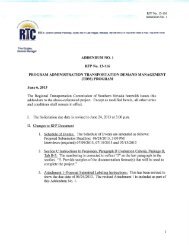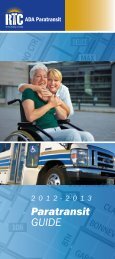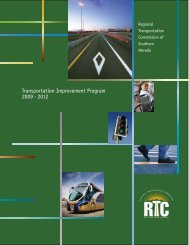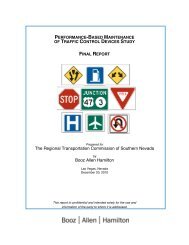(Blue Diamond Road) Corridor Study - Regional Transportation ...
(Blue Diamond Road) Corridor Study - Regional Transportation ...
(Blue Diamond Road) Corridor Study - Regional Transportation ...
You also want an ePaper? Increase the reach of your titles
YUMPU automatically turns print PDFs into web optimized ePapers that Google loves.
4. Evaluation Methodology RTC SR-160 <strong>Corridor</strong> <strong>Study</strong><br />
<br />
Community Support – How much community support is there for new mass transit<br />
services<br />
System ridership is an especially important measure of how effectively new transit service<br />
improves both mobility and accessibility. Ridership is related to several factors, including<br />
the baseline demographics of the residential population in proximity to transit stations and<br />
the transit supportive attributes of land uses within the corridor. In addition, the<br />
concentration of major trip attractors along the corridor, such as commercial, retail, tourist,<br />
and education, also plays an important role in the potential for new transit service to<br />
capture market shares.<br />
Generally, sufficiently high residential and commercial densities clustered tightly within a<br />
major transportation corridor are required to produce sufficient ridership levels to justify the<br />
investment in a fixed guideway mass transit system. This corridor profile is common in<br />
major cities with central business districts (CBDs) that represent a significant share of the<br />
region’s employment and commercial activity. Where the prevailing transit mode share is<br />
high and land acquisition is prohibitively expensive, fixed guideway systems serving urban<br />
corridors do not typically require Park & Ride lots as a precondition for attracting ridership.<br />
In a lower density environment that may be characterized as suburban, Park & Ride<br />
facilities have been adopted as a transit-supportive strategy needed to attract choice riders<br />
in areas where the existing automobile mode share is very high. For our purposes, the land<br />
use characteristics of the <strong>Blue</strong> <strong>Diamond</strong> study area are defined as suburban/rural, with the<br />
area between Durango Drive and Decatur Boulevard transitioning from rural to largely<br />
suburban.<br />
EXHIBIT 4-1: Carrying Capacity of Mass Transit Alternatives<br />
50<br />
Average Speed (mph)<br />
40<br />
30<br />
20<br />
10<br />
BRT<br />
LRT<br />
AGT<br />
Heavy Rail<br />
0<br />
5,000<br />
10,000 15,000 20,000 25,000<br />
Capacity (passengers/hour)<br />
4-4



